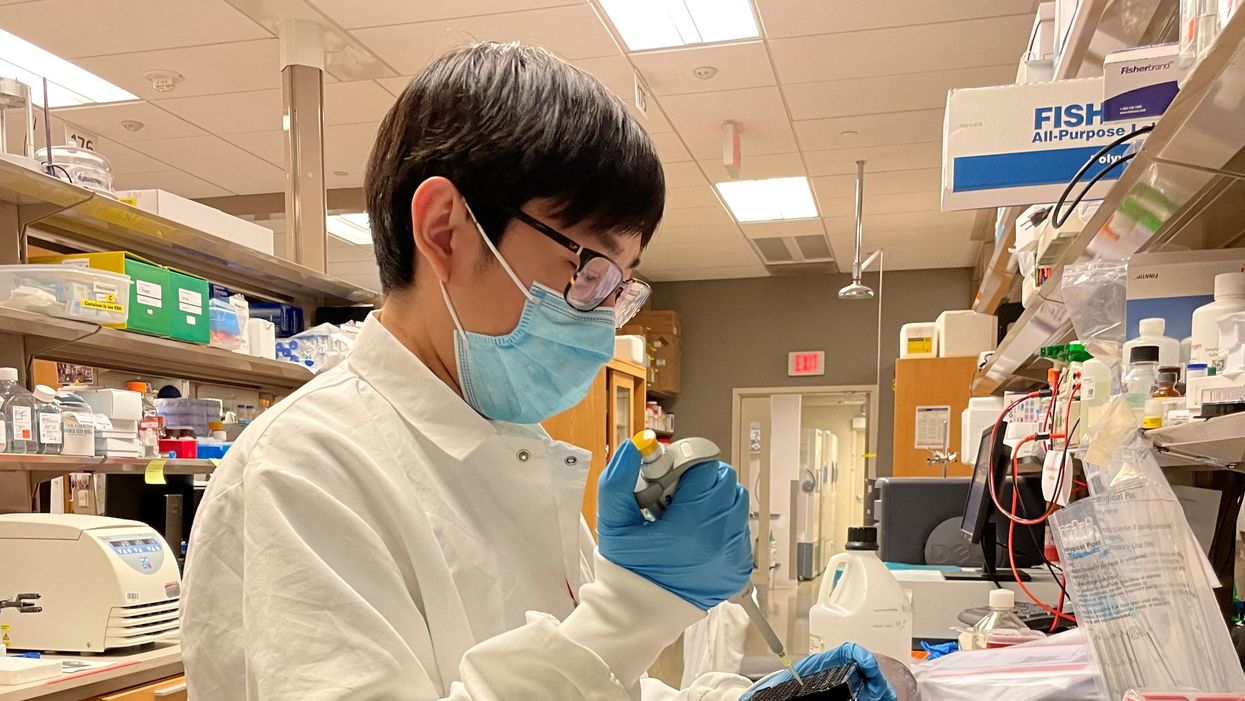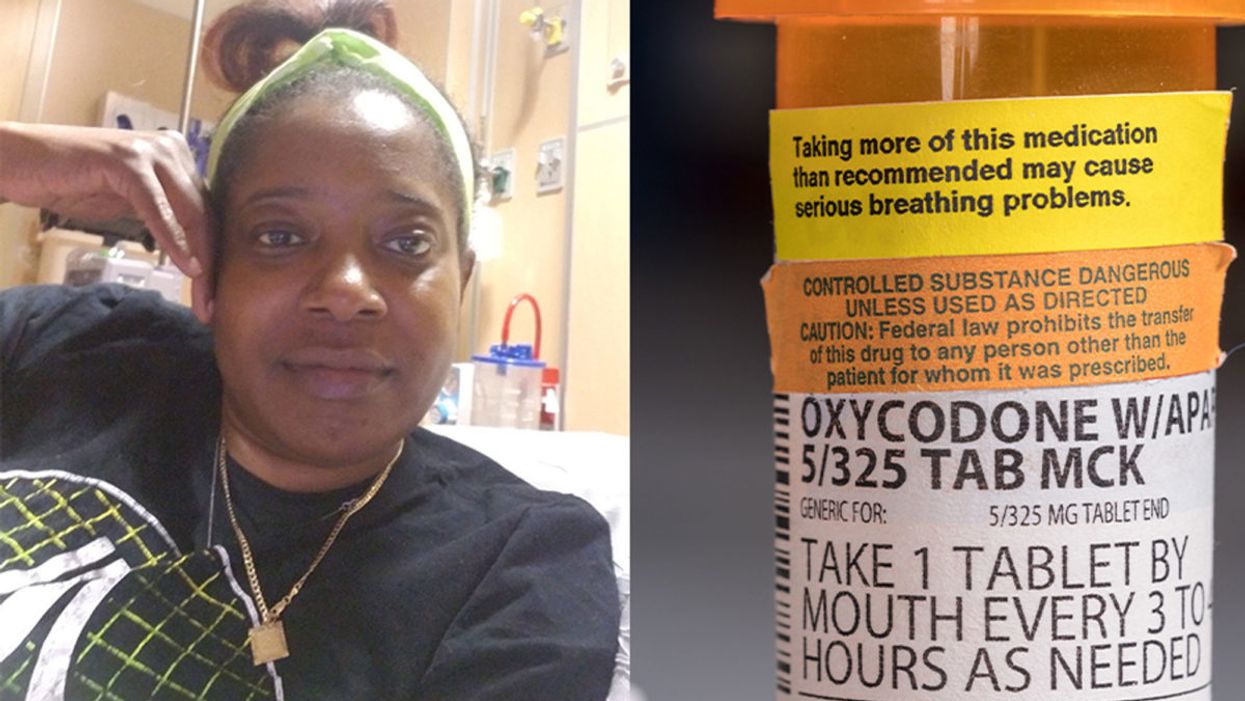Jacob Brenner and his partners at the University of Pennsylvania's Perelman School of Medicine are finding new ways to get nanomedicines to arrive at their targets.
Its strength is in its lack of size.
Using materials on the minuscule scale of nanometers (billionths of a meter), nanomedicines have the ability to provide treatment more precise than any other form of medicine. Under optimal circumstances, they can target specific cells and perform feats like altering the expression of proteins in tumors so that the tumors shrink.
Another appealing concept about nanomedicine is that treatment on a nano-scale, which is smaller yet than individual cells, can greatly decrease exposure to parts of the body outside the target area, thereby mitigating side effects.
But this young field's huge potential has met with an ongoing obstacle: the recipient's immune system tends to regard incoming nanomedicines as a threat and launches a complement protein attack. These complement proteins, which act together through a wave of reactions to get rid of troubling microorganisms, have had more than 500 million years to refine their craft, so they are highly effective.
Seeking to overcome a half-billion-year disadvantage, nanomaterials engineers have tried such strategies as creating so-called stealth nanoparticles.
“All new technologies face technical barriers, and it is the job of innovators to engineer solutions to them,” Brenner says.
Despite these clever attempts, nanomedicines largely keep failing to arrive at their intended destinations. According to the most comprehensive meta-analysis of nanomedicines in oncology, fewer than 1 percent of nanoparticles manage to reach their targets. The remaining 99-plus percent are expelled to the liver, spleen, or lungs – thereby squandering their therapeutic potential. Though these numbers seem discouraging, systems biologist Jacob Brenner remains undaunted. “All new technologies face technical barriers, and it is the job of innovators to engineer solutions to them,” he says.
Brenner and his fellow researchers at the Perelman School of Medicine at the University of Pennsylvania have recently devised a method that, in a study published in late 2021 involving sepsis-afflicted mice, saw a longer half-life of nanoparticles in the bloodstream. This effect is crucial because “the longer our nanoparticles circulate, the more time they have to reach their target organs,” says Brenner, the study's co-principal investigator. He works as a critical care physician at the Hospital of the University of Pennsylvania, where he also serves as an assistant professor of medicine.
The method used by Brenner's lab involves coating nanoparticles with natural suppressors that safeguard against a complement attack from the recipient's immune system. For this idea, he credits bacteria. “They are so much smarter than us,” he says.
Brenner points out that many species of bacteria have learned to coat themselves in a natural complement suppressor known as Factor H in order to protect against a complement attack.
Humans also have Factor H, along with an additional suppressor called Factor I, both of which flow through our blood. These natural suppressors “are recruited to the surface of our own cells to prevent complement [proteins] from attacking our own cells,” says Brenner.
Coating nanoparticles with a natural suppressor is a “very creative approach that can help tone and improve the activity of nanotechnology medicines inside the body,” says Avi Schroeder, an associate professor at Technion - Israel Institute of Technology, where he also serves as Head of the Targeted Drug Delivery and Personalized Medicine Group.
Schroeder explains that “being able to tone [down] the immune response to nanoparticles enhances their circulation time and improves their targeting capacity to diseased organs inside the body.” He adds how the approach taken by the Penn Med researchers “shows that tailoring the surface of the nanoparticles can help control the interactions the nanoparticles undergo in the body, allowing wider and more accurate therapeutic activity.”
Brenner says he and his research team are “working on the engineering details” to streamline the process. Such improvements could further subdue the complement protein attacks which for decades have proven the bane of nanomedical engineers.
Though these attacks have limited nanomedicine's effectiveness, the field has managed some noteworthy successes, such as the chemotherapy drugs Abraxane and Doxil, the first FDA-approved nanomedicine.
And amid the COVID-19 pandemic, nanomedicines became almost universally relevant with the vast circulation of the Moderna and Pfizer-BioNTech vaccines, both of which consist of lipid nanoparticles. “Without the nanoparticle, the mRNA would not enter the cells effectively and would not carry out the therapeutic goal,” Schroeder explains.
These vaccines, though, are “just the start of the potential transformation that nanomedicine will bring to the world,” says Brenner. He relates how nanomedicine is “joining forces with a number of other technological innovations,” such as cell therapies in which nanoparticles aim to reprogram T-cells to attack cancer.
With a similar degree of optimism, Schroeder says, “We will see further growing impact of nanotechnologies in the clinic, mainly by enabling gene therapy for treating and even curing diseases that were incurable in the past.”
Brenner says that in the next 10 to 15 years, “nanomedicine is likely to impact patients” contending with a “huge diversity” of conditions. “I can't wait to see how it plays out.”
A New Test Aims to Objectively Measure Pain. It Could Help Legitimate Sufferers Access the Meds They Need.
Sickle cell patient Bridgett Willkie found herself being labeled an addict when she sought an opioid prescription to control her pain.
"That throbbing you feel for the first minute after a door slams on your finger."
This is how Central Florida resident Bridgett Willkie describes the attacks of pain caused by her sickle cell anemia – a genetic blood disorder in which a patient's red blood cells become shaped like sickles and get stuck in blood vessels, thereby obstructing the flow of blood and oxygen.
"I found myself being labeled as an addict and I never was."
Willkie's lifelong battle with the condition has led to avascular necrosis in both of her shoulders, hips, knees and ankles. This means that her bone tissue is dying due to insufficient blood supply (sickle cell anemia is among the medical conditions that can decrease blood flow to one's bones).
"That adds to the pain significantly," she says. "Every time my heart beats, it hurts. And the pain moves. It follows the path of circulation. I liken it to a traffic jam in my veins."
For more than a decade, she received prescriptions for Oxycontin. Then, four years ago, her hematologist – who had been her doctor for 18 years – suffered a fatal heart attack. She says her longtime doctor's replacement lacked experience treating sickle cell patients and was uncomfortable writing her a prescription for opioids. What's more, this new doctor wanted to place her in a drug rehab facility.
"Because I refused to go, he stopped writing my scripts," she says. The ensuing three months were spent at home, detoxing. She describes the pain as unbearable. "Sometimes I just wanted to die."
One of the effects of the opioid epidemic is that many legitimate pain patients have seen their opioids significantly reduced or downright discontinued because of their doctors' fears of over-prescribing addictive medications.
"I found myself being labeled as an addict and I never was...Being treated like a drug-seeking patient is degrading and humiliating," says Willkie, who adds that when she is at the hospital, "it's exhausting arguing with the doctors...You dread them making their rounds because every day they come in talking about weaning you off your meds."
Situations such as these are fraught with tension between patients and doctors, who must remain wary about the risk of over-prescribing powerful and addictive medications. Adding to the complexity is that it can be very difficult to reliably assess a patient's level of physical pain.
However, this difficulty may soon decline, as Indiana University School of Medicine researchers, led by Dr. Alexander B. Niculescu, have reportedly devised a way to objectively assess physical pain by analyzing biomarkers in a patient's blood sample. The results of a study involving more than 300 participants were published earlier this year in the journal Molecular Psychiatry.
Niculescu – who is both a professor of psychiatry and medical neuroscience at the IU School of Medicine – explains that, when someone is in severe physical pain, a blood sample will show biomarkers related to intracellular adhesion and cell-signaling mechanisms. He adds that some of these biomarkers "have prior convergent evidence from animal or human studies for involvement in pain."
Aside from reliably measuring pain severity, Niculescu says blood biomarkers can measure the degree of one's response to treatment and also assess the risk of future recurrences of pain. He believes this new method's greatest benefit, however, might be the ability to identify a number of non-opioid medications that a particular patient is likely to respond to, based on his or her biomarker profile.
Clearly, such a method could be a gamechanger for pain patients and the professionals who treat them. As of yet, health workers have been forced to make crucial decisions based on their clinical impressions of patients; such impressions are invariably subjective. A method that enables people to prove the extent of their pain could remove the stigma that many legitimate pain patients face when seeking to obtain their needed medicine. It would also improve their chances of receiving sufficient treatment.
Niculescu says it's "theoretically possible" that there are some conditions which, despite being severe, might not reveal themselves through his testing method. But he also says that, "even if the same molecular markers that are involved in the pain process are not reflected in the blood, there are other indirect markers that should reflect the distress."
Niculescu expects his testing method will be available to the medical community at large within one to three years.
Willkie says she would welcome a reliable pain assessment method. Well-aware that she is not alone in her plight, she has more than 500 Facebook friends with sickle cell disease, and she says that "all of their opioid meds have been restricted or cut" as a result of the opioid crisis. Some now feel compelled to find their opioids "on the streets." She says she personally has never obtained opioids this way. Instead, she relies on marijuana to mitigate her pain.
Niculescu expects his testing method will be available to the medical community at large within one to three years: "It takes a while for things to translate from a lab setting to a commercial testing arena."
In the meantime, for Willkie and other patients, "we have to convince doctors and nurses that we're in pain."

